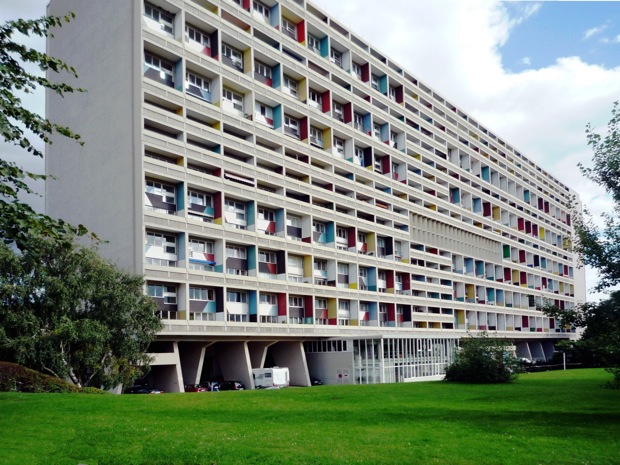When is a landmark building too ugly to preserve?

Designed in 1967 by Paul Rudolph, a prominent architect known for his boxy, Modernist designs, the Center (shown above) is in need of repairs and restoration. But those who deem it ugly and outdated--including members of the area's administration--would rather build a replacement. This is despite the fact that the Center appears on the 2012 World Monuments Fund watch list, which points out "significant monuments, buildings and sites" that are endangered.
But is the cement, angular structure in Goshen as important to global design history as, say, the Buddhas of Bamiyan in Afghanistan, which the Taliban destroyed in 2001; the Valley of Kings in Egypt; or Ellis Island in the United States? (All of these appear on the World Monuments Fund watch list, too.)
An article by Robin Pogrebin in the April 7 issue of The New York Times focuses on the heated discussions surrounding the building in Goshen to investigate a larger design conundrum: just how valuable is plain (and even just plain ugly) Modernist architecture? Yes, there's an aesthetic issue at hand. And a cultural one, too. But what about the blunt, business side of the equation?
As Pogrebin summed up the dilemma of what to preserve and what to replace in the Times,
As Modernist buildings reach middle age, many of the stark structures that once represented the architectural vanguard are showing signs of wear, setting off debates around the country between preservationists, who see them as historic landmarks, and the many people who just see them as eyesores.
Whether or not anyone finds Brutalist buildings attractive doesn't matter when it comes to the economics of preservation. The cost to preserve historical buildings--especially when they're damaged due to weather or other causes--can be prohibitive. The Center in Goshen, for instance, could cost $35 million (as the preservationists estimate) to $65 million (as the county estimates). It has mold and ventilation issues and a leaking roof, among other major problems. And for only about $20 million more than the estimated cost to refurbish it, Pogrebin reports, the county could build an entirely new center as well as upgrade numerous other buildings.
But perhaps the threat against Brutalist architecture's survival is just a matter of marketing.
“Brutalism was supposed to bring back all sorts of things like craft — the concrete wasn’t smooth, you could feel the hand of the worker there. But it was perceived in almost the exact opposite way," Barry Bergdoll, the chief curator of architecture and design at the Museum of Modern Art, said to Pogrebin.
"It’s one of the great public relations failures of all time," Bergdoll said. "Most people think of Brutalist architecture literally — as aggressive, heavy, boding and forbidding.”
Could preservationists make a case for saving Brutalist buildings like the Orange County Government Center by publicizing its cultural value? One tactic might be to associate Brutalist buildings in danger of being demolished with the more elegant examples of Modernism. This could attract potential funders of preservation projects. The celebrated Swiss architect Le Corbusier, for instance, is a Brutalist designer.

Then again, Rudolph, who designed the Goshen building, is a respected architect, too, having designed Yale University's Art and Architecture Building. Perhaps the costs of preserving Brutalist structures--or those of any outdated style--with large repair bills might simply be too daunting. While taste and historical context does matter, ultimately, economics may matter more.
Images: Daniel Case/Wikipedia; Manfred Bruckels/Wikipedia
This post was originally published on Smartplanet.com
